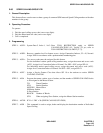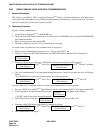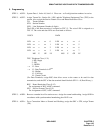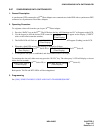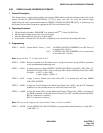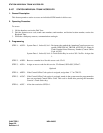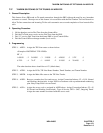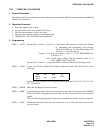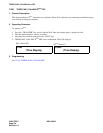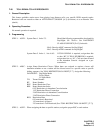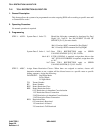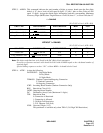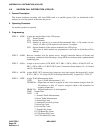
NDA-24305 CHAPTER 5
Page 151
Revision 1.0
TANDEM SWITCHING OF TIE TRUNKS-2/4-WIRE-PRI
T-37 TANDEM SWITCHING OF TIE TRUNKS-2/4-WIRE-PRI
1. General Description
This feature allows PRI trunk-to-Tie-trunk connections through the PBX without the need for any Attendant
assistance or control. The major use of this feature is in association with the Dial Tandem Tie Line Network to
allow Tie line connections and incoming Tie line calls automatic access to and completion of local central office
calls.
2. Operating Procedure
1. Lift the handset; receive Dial Tone from the distant office.
2. Dial the Tie Trunk access code; receive Dial Tone from the PBX.
3. Dial “9”; receive Dial Tone from the distant PBX or local Central Office.
4. Dial the Central Office exchange number (local or toll).
3. Programming
STEP 1: ARTD - Assign the TIE Line routes as shown below:
STEP 2: ATRK - Assign the LENs, TIE Line Route Number, Trunk Number, and Tenant Number.
STEP 3: MBTK - Assign the Make Idle status to the TIE Line Trunks.
STEP 4: ANPD - Reserve a number level for trunk access. Assign Connection Indexes, CI = N, H; Normal
and Hooking (hookswitch). Assign NND in accordance with a predetermined numbering
plan. Busy Lamp Field is not activated.
STEP 5: ASPA - Assign the access code as assigned in ANPD above. Assign Connection Indexes, CI = N,
H; Normal and Hooking (hookswitch). Type of Service, SRV = OGC, Outgoing Trunk.
Assign the route number associated with this access code.
<Example of BOTHWAY TIE-LINES>
RT : 1
1-OSGS : 2 2-ONSG : 3 3-ISGS : 2 4-INSG : 3 5-TF : 3
6-TCL : 4 7-L/T : 1 8-RLP : 2 15-LSG : 4 28-ANS : 1
The other data than above should be set “0” (default data).



